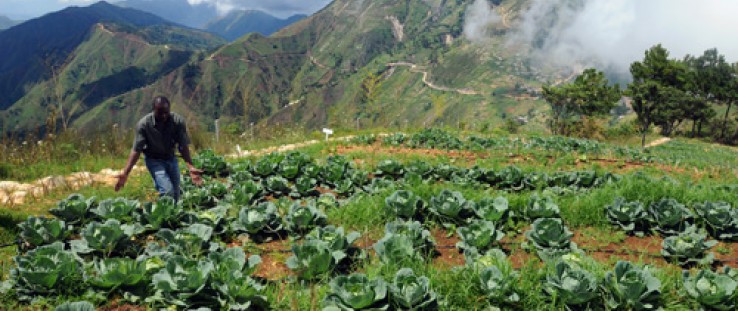 John Atis, the regional director for USAID's Watershed Initiative for National Natural Environmental Resources (WINNER) program in Kenscoff, Haiti, talks about cabbage grown at the Wynne Farm, a mountaintop training facility for farmers.
Kendra Helmer, USAID
John Atis, the regional director for USAID's Watershed Initiative for National Natural Environmental Resources (WINNER) program in Kenscoff, Haiti, talks about cabbage grown at the Wynne Farm, a mountaintop training facility for farmers.
Kendra Helmer, USAID
 John Atis, the regional director for USAID's Watershed Initiative for National Natural Environmental Resources (WINNER) program in Kenscoff, Haiti, talks about cabbage grown at the Wynne Farm, a mountaintop training facility for farmers.
Kendra Helmer, USAID
John Atis, the regional director for USAID's Watershed Initiative for National Natural Environmental Resources (WINNER) program in Kenscoff, Haiti, talks about cabbage grown at the Wynne Farm, a mountaintop training facility for farmers.
Kendra Helmer, USAID
In addition to the incredible human loss suffered on Jan. 12, 2010, the 7.0 earthquake that struck Port-au-Prince damaged critical infrastructure and caused $7.8 billion in damages and losses—equal to 120 percent of Haiti's 2009 GDP.
Haitians are eager to rebuild and work toward a brighter future, and a year after the earthquake, USAID continues to provide support for much-needed basic services while helping the country embark on a plan of sustainable economic development. But with so much destruction to both infrastructure and human resources, it is critical that reconstruction efforts be carefully targeted, playing to Haiti's strengths and comparative advantages.
The Agency's economic growth programs target sectors like agriculture and garment manufacturing. These programs are designed to facilitate trade, rebuild the private sector, increase incomes and living standards, create employment opportunities, and improve youth workforce skills.
Hope in Mangoes
Earlier this year, USAID partnered with the non-profit organizations CHF and Citizen Network for Foreign Affairs, and agribusiness firm Jean-Maurice Buteau S.A. to strengthen local farmer associations and open two post-harvest mango centers in Cabaret and Saut d'Eau.
Even though mangoes are one of Haiti's top export crops, farmers lose 30 percent to 40 percent of their post-harvest crop because of lack of training and infrastructure. Poorly packaged products can get bruised or spoil, and foreign importers must be able to verify the origin of the mangoes.
At the two new centers, workers prepare mangoes and other produce for export, ensuring that the goods are packaged properly and meet the standards of foreign importers. In addition to creating jobs at the center itself, this public-private partnership—implemented by CHF International Haiti, a Maryland-based nonprofit organization and USAID partner—will increase production and incomes up to an estimated 20 percent for thousands of Haitian farmers.
"We're proud to support farmers and help make their products available to more people, including buyers overseas," said USAID/Haiti Mission Director Carleene Dei. "These centers teach farmers how to better package and sell their produce, which will increase their marketability and raise incomes. The centers will help Haiti leverage its precious natural resources and help farmers realize their crops' full economic potential."
USAID is also helping Haitian farmers by supporting the Coca-Cola Haiti Hope Project. The Agency is providing $1 million in funding for the public-private initiative to develop a sustainable mango industry, including the mango juice industry, in Haiti. With support from Coca-Cola, the U.S. government, the Inter-American Development Bank, and the Clinton Bush Haiti Foundation, the Haiti Hope Project focuses on improving local mango farming capacity to increase farmer incomes and stimulate economic growth and sustainable development.
Garments to Move Masses
Another key U.S. public-private partnership focuses on the garment industry to create jobs in areas outside the crowded capital city.
Along with the Haitian government and the Inter-American Development Bank, the United States recently signed an agreement to construct an industrial park in Haiti's north with South Korea's leading garment manufacturer, Sae-A Trading Co. Ltd, as the anchor tenant. Sae-A alone will bring an estimated 20,000 permanent jobs to the area, and total employment is projected at 65,000 permanent jobs once the park is fully developed.
The U.S. Congress's passage of the Haiti Economic Lift Program (HELP) Act in May 2010 essentially promotes investment in Haiti and supports the rebuilding of the garment sector. By significantly increasing U.S. trade preferences for Haitian apparel, the HELP Act was a critical catalyst that, in turn, has made Haiti more attractive to large-scale manufacturing operations like Sae-A. As the first manufacturer to produce apparel with textiles made in Haiti, the Northern Industrial Park is expected to greatly increase garment production and volume of trade.
USAID economic programs work hand-in-hand with training and education. Through facilities like the Port-au-Prince Haiti Apparel Center—a 6,000 square meter facility built to train more than 2,000 workers a year for the garment industry—USAID is helping to ensure that Haiti's youth have the technical training required for tomorrow's jobs.
"Providing technical training in conjunction with job creation programs is a great way to prepare Haiti's youth for the economic opportunities that are growing as investment in Haiti increases," Dei said.
Existing Technologies, Better Application
Apart from training, technological innovation is also helping Haitians look to future economic security through increased financial services and access to savings. The Haiti Mobile Money Initiative, a partnership between USAID and the Bill & Melinda Gates Foundation, has helped launch mobile money services in Haiti so millions of Haitians who use mobile phones can use pre-existing and readily available technology to send, receive, and store money safely, as well as to transact for basic goods.
Making the most of simple technologies is also the basis for the USAID WINNER project, an agricultural program that operates on a similar principle of optimizing agricultural production through simple techniques and changes in planting and fertilization.
In addition to infrastructure repair and reforestation activities, WINNER, which stands for Watershed Initiative for National Natural Environmental Resources, uses demonstration farms as training grounds. One technique imparted on WINNER's model farms is vertical agriculture, which allows farmers to grow more in a limited space, thereby discouraging the cultivation of lands that are unsuited for agricultural production such as steep slopes.
In 2010, WINNER's work with the Haitian Ministry of Agriculture helped more than 10,500 small- and medium-sized farmers grow corn, sorghum, beans, potatoes, and other vegetables. WINNER-trained extension agents offered new techniques to the farmers, who planted over three-quarters of their land with local crop varieties. Overall, the campaign increased production by 75 percent.
No single effort alone, no magic bullet, will result in a path out of poverty for Haiti. Instead, recovery will come as basic services continue to improve, providing the backbone for recovery, and smart economic investments allow the Haitian people to help themselves.







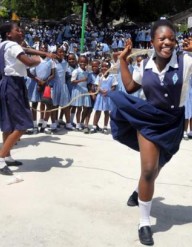

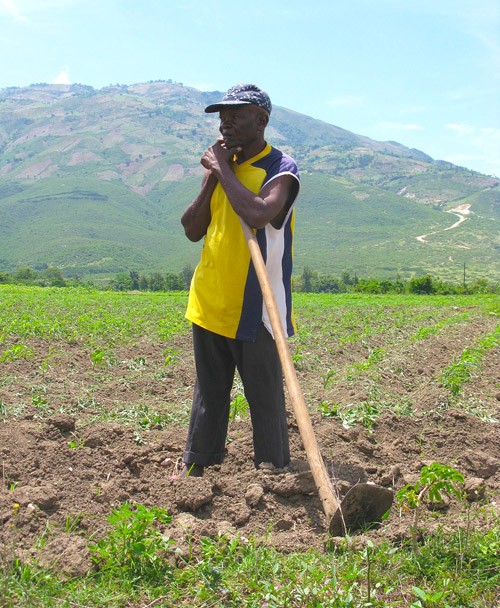
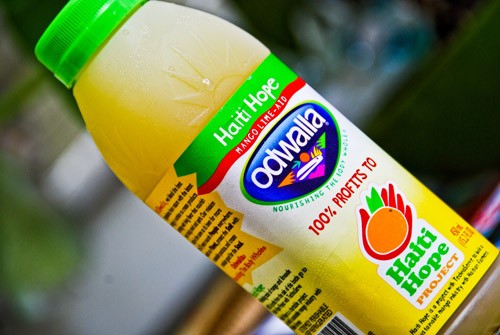
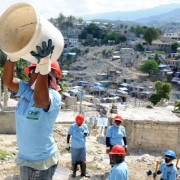
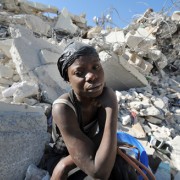
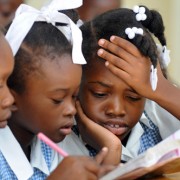
Comment
Make a general inquiry or suggest an improvement.